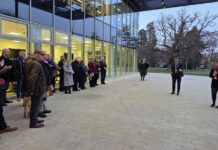
By Sara Edmonds, co-director of the National Retrofit Hub
AS Scotland’s building industry reckons with the formidable challenge of scaling up retrofit initiatives and decarbonising homes, a new report from the National Retrofit Hub has unveiled a fragmented and inconsistent landscape of retrofit models across the UK. The findings, detailed in Retrofit Delivery: State of the Nation Review, highlight the urgent need for a unified approach to tackle the complexities of retrofit and building performance improvements and the opportunities taking a collaborative approach to solutions might offer.
This in-depth report, produced by the NRH in collaboration with consultants Arup and climate-change charity Ashden, depicts a sector struggling with inconsistency and a lack of coherence. Drawing on insights from 200 stakeholders nationwide, the report highlights the pressing need to streamline processes, clarify intended outcomes, and establish consistent measurement methods for implemented retrofits.
The complexity of retrofit models
A key challenge stems from the variance of retrofit delivery models currently in use across Scotland and the wider UK. The models, each with their own set of metrics and goals, create a complex ‘shifting sands’ scenario that makes it challenging to define what success looks like in the retrofit space. Different models aim to deliver on different metrics. This means a broad range of measures can be installed, making it very hard to compare or define what ‘good’ looks like.
For example, achieving an Energy Performance Certificate rating of C could involve anything from simple measures like changing light bulbs to more substantial improvements such as installing new windows or low-carbon heating systems, but this all depends on a building’s starting condition and available budget for the installation of planned measures.
Further complicating matters is the issue of building repair. In some cases, funding can be insufficient so necessary repairs can consume a significant portion of the budget, preventing the implementation of deeper retrofit measures. This reality underscores the need for a more holistic approach to building improvement that considers both immediate repair needs and long-term energy efficiency goals.
The funding conundrum
The report also sheds light on the challenges faced by delivery organisations due to the lack of clarity surrounding long-term funding availability. Many retrofit models rely on grant mechanisms, but the volatile nature of these funding streams has historically created deep problems for installers and contractors, from a lack of confidence to invest in their business to a lack of motivation to upskill.
The NRH has seen evidence of how inconsistent funding can derail the ability of installers and contractors to confidently invest in future work. This instability in the sector is a significant barrier to scaling up retrofit efforts across the country.
Collaboration paves the way forward
Despite the challenges, the report highlights a silver lining which is the willingness of stakeholders to collaborate and share knowledge. The comprehensive engagement process, which included collaborative and detailed interactive workshops, confirmed the sector’s readiness to work together towards common goals. The NRH operates as a network, reliant on the contributions of the committed organisations and individuals involved. The significant level of participation underscores the necessity for coordination, convening, and consolidation in this effort.
Four priority areas
The report identifies four priority areas where the NRH believes it can best leverage its network and achieve significant impact:
• Public Engagement: Enhancing community involvement to ensure delivery models meet local needs.
• Grant Structures: Streamlining funding mechanisms for greater efficiency.
• Measuring Outcomes: Implementing comprehensive metrics to track progress.
• Planning Policy: Developing cohesive strategies that reflect best practices.
The NRH is adopting an agile approach to tackle these priorities, acknowledging the importance of strategically managing its resources and the contributions of its network members.
For public engagement, the NRH is combining research efforts with its existing communications work in its WG6 – Driving Uptake working group. On grant structures, it is focusing on strengthening relationships with government and local authorities to ensure positive feedback loops regarding the lived experiences of those working with grant structures.
The measuring outcomes workstream, developing in collaboration with Arup, is set to be a cornerstone initiative that will involve all six of the NRH’s working groups. This is crucial for setting clear targets and designing effective retrofit delivery programmes. Ultimately, there needs to be clarity on what it is everyone is aiming towards.
Lastly, the NRH is collaborating with regional councils to examine solutions for retrofit in the context of conservation areas, addressing the unique challenges posed by historic and protected buildings.
A call to action
The report’s findings underscore the urgent need for defined outcomes to set and achieve meaningful targets. The robust engagement from a diverse range of stakeholders, including Scottish players, underscores the sector’s readiness to collaborate on these critical improvements.
The NRH invites passionate individuals and organisations to join ongoing efforts to refine and enhance delivery models. Feedback and additional insights are welcomed to ensure the report remains a dynamic and evolving resource. This research is a significant step forward, but there’s more to do.







